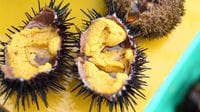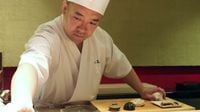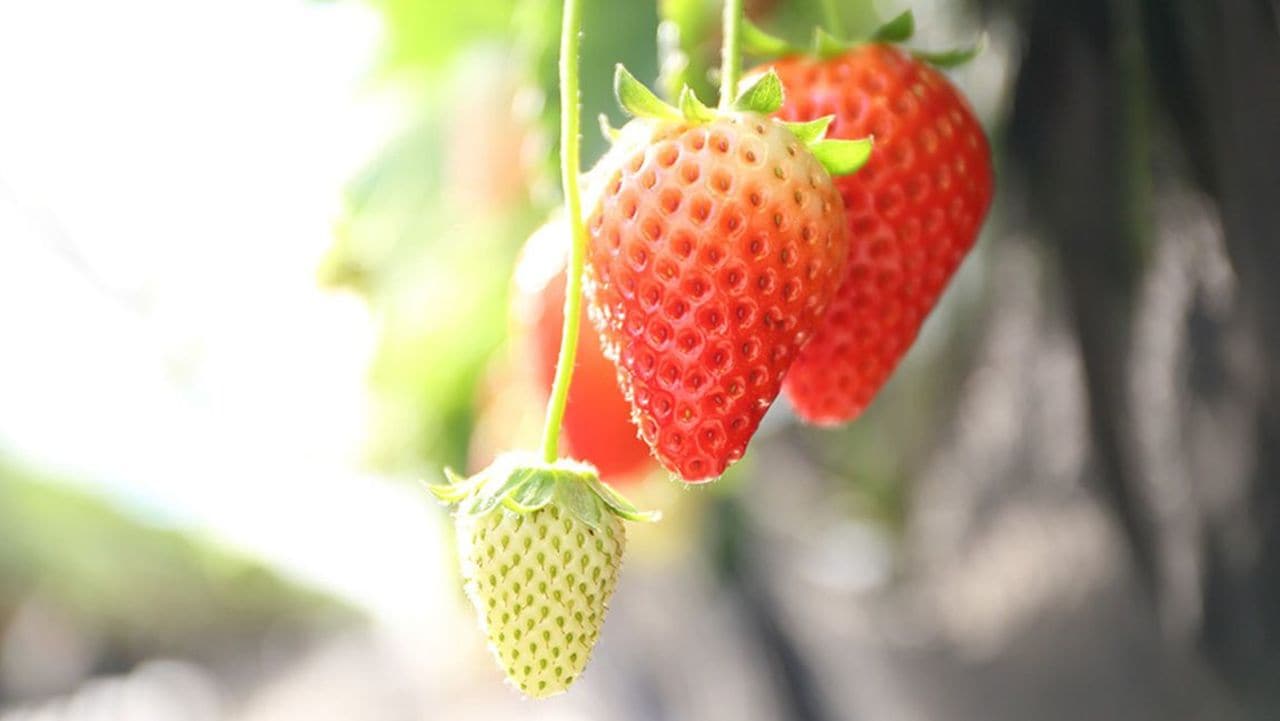

It is said that Japan consumes the largest amount of fresh strawberries in the world, and that the country prides itself in its world-class variety improving and farming technologies. Tochigi in eastern Japan is the birthplace of Tochiotome, one of the main varieties of strawberry sold in stores. Tochigi is known as the “strawberry kingdom” and has maintained its position as the prefecture in Japan that produces the most strawberries for as long as 48 years (since 1968). We visited Ashikaga, the home of Tochigi’s strawberries, to hear stories about the strawberry farms Japan is so proud of.
The kingdom had its beginnings in Ashikaga
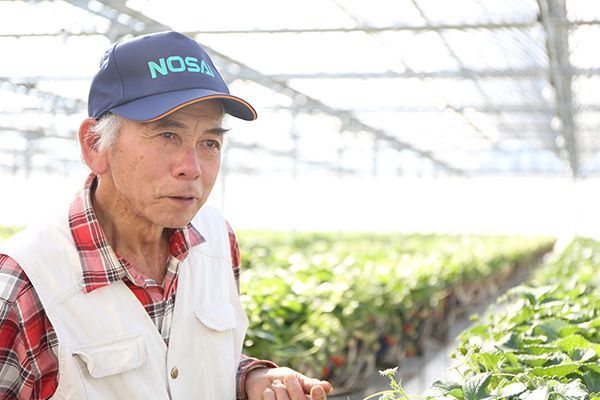
Tochigi’s winters are characterized by long periods of sunshine and marked temperature swings, both of which are perfect for growing strawberries.
Ashikaga is a city rich in nature—situated in the southwestern part of Tochigi, it has the Ashio Mountains in the north and the Watarase River running through it.
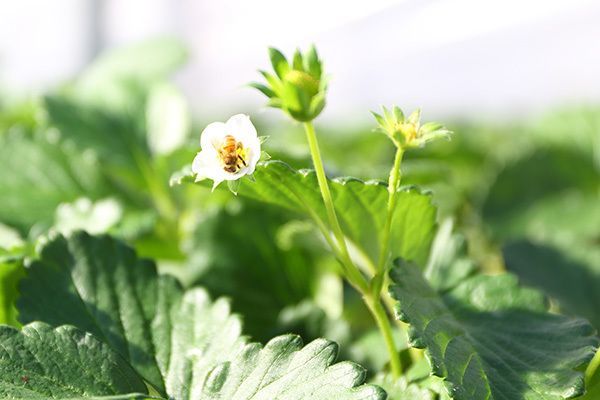
Soon after World War II, people in Ashikaga tried to grow strawberries even though strawberries were then said to grow well in warmer places, like Shizuoka in southern Japan. Farmers in Tochigi were looking for the ideal crop to grow on their land, where cultivated area per farmhouse was small and business was unstable. The result was strawberries. However, strawberries were originally suited to warmer places like Shizuoka, and the farmers of Tochigi had a hard time protecting their strawberries from the cold climate, as back then, they were grown outdoors. However, in the 1960s, greenhouse farming became widespread in Ashikaga, attracting many people from around Tochigi asking for advice on greenhouse farming.
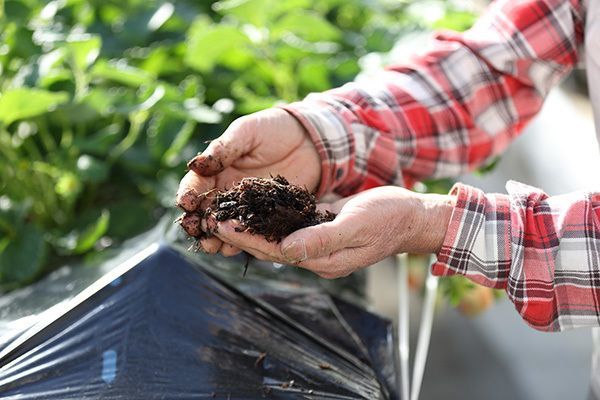
The local government also supported strawberry farming by improving fruit varieties. In 1985, Tochigi announced the birth of Nyoho, a variety that could be harvested early in season and was easy to grow; and in 1996, Tochiotome, a variety that produced larger fruit and was sweeter. Tochiotome prevailed as one of the main strawberry varieties of Japan, and even generated the expression “Tochiotome of the east (referring to Tochigi), Amao of the west (referring to Fukuoka)”.
Cutting-edge technologies and the effort of locals
Shunichi Kikuchi, a strawberry grower from Ashikaga City and head of the Japan Agricultural Cooperatives (JA) Ashikaga Strawberry Division, grows Tochiotome in a greenhouse using leading-edge technologies.
In his large, 1500 square meter greenhouse, we saw strawberry plants placed on arrays of benches that were about one meter high.
“We used to have to cover the strawberries with straw blankets to protect them from the winter frost, but we don’t need to do that anymore,” says Kikuchi.
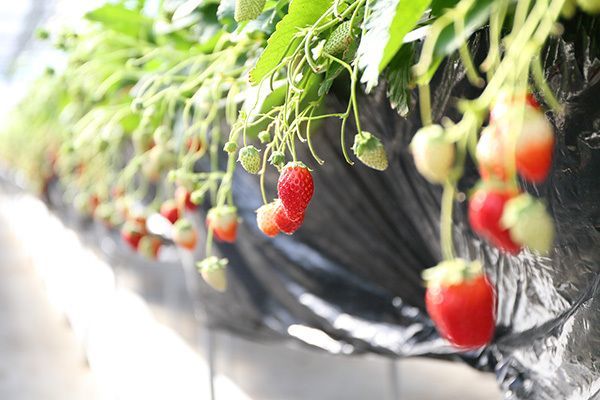
He then told us that by keeping the strawberries off the ground, they can prevent soil-related diseases and eliminate the need for workers to bend over, which makes harvesting much easier.
Kikuchi also controls the composition and strength of the fertilizer used with a computer while regularly measuring the strawberries’ sugar content. In this greenhouse, strawberries can be harvested from each plant about five to six times, so they are given the optimum blend of nutrients to keep their sweetness uniform throughout the seasons.
Although Kikuchi relies on these cutting-edge technologies, he says that they are not the only factor for growing tasty strawberries.
“It is honeybees that revolutionized strawberry farming”.
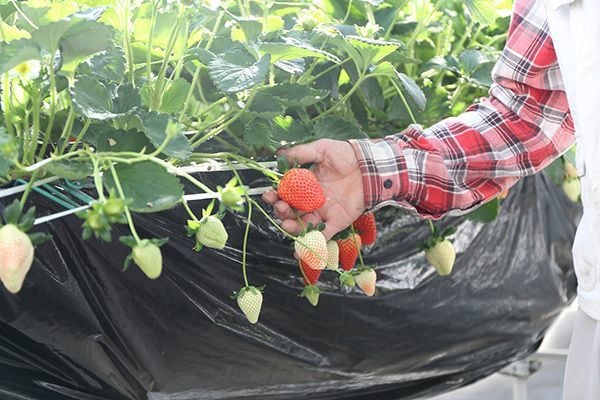
About 40 years ago, Kikuchi used to pollinate strawberries by drawing natural wind into the greenhouse. But this dependence on wind power meant uneven pollination, resulting in poorly shaped strawberries and low yields. By accident, Kikuchi noticed that the strawberry plants of a farm near a bee yard had very shapely fruit. He then tried this out by putting a beehive in his greenhouse and the pollination rate greatly improved, yielding beautiful strawberries.
“The honeybees work really well. Today, it is common knowledge to minimize the use of insecticides because of the honeybees and to instead introduce natural enemies for pest extermination.”
Kikuchi also told us that in Tochigi’s style of keeping strawberry plants above the ground, they also use processed bark from local cedar trees in place of soil. Cedar bark used to be waste that was difficult to dispose of, but it is now being used as an “oasis” for strawberries, due to its light weight and the fact that strawberries can easily grow roots into it. The use of cedar bark also contributes to Tochigi’s environmental conservation.
With these many advances farming technologies and techniques, Kikuchi can provide strawberries of a stable quality over a long period of time, from early November to May. He says this has resulted in a stable source of income for farmers and more local employment.
Strawberries have two peak seasons
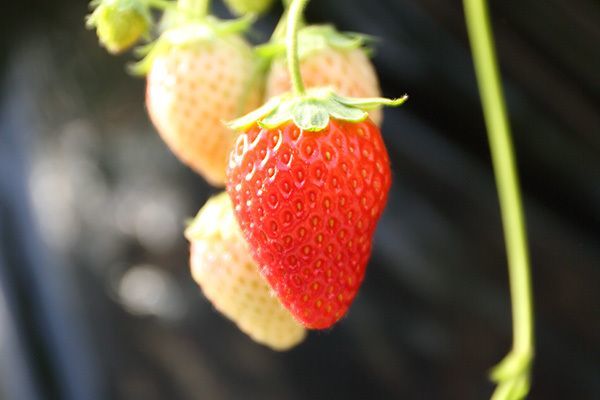
Currently, Tochigi’s strawberries have two peak seasons. One is when the demand is at its peak, and the other is when the strawberries are at their most tasty.
The month of peak demand is December, because well-shaped strawberries are in high demand for decorating Christmas cakes. Strawberry plants bear flower buds during the transition from fall to winter, when days become shorter and colder, so they are put into a refrigerator set at 10°C in around August to encourage the growth of flower buds. This way, the strawberries can be shipped as early as possible to fulfill demand.
Meanwhile, the regular peak season of strawberries, when they are most tasty, is from around January to March. They are harvested before 10 a.m., when the temperatures are still low, and are cooled for about half a day after harvest in a refrigerator before being shipped out.
“Strawberries do not have protective skin like other fruits, so they need to be cooled to tighten the fruit, that way they do not get damaged during shipment. We harvest them at the right time so that they will turn fully red just when they are displayed in stores," says Kikuchi.
The pride of the land of strawberries
As well as Tochiotome strawberries, Kikuchi grows Skyberry, Tochigi’s new strawberry variety announced in 2014, in his greenhouse. Skyberry strawberries breed very rigorously and are easy to grow. Because they are large, beautiful and tasty, they are apparently popular as luxury strawberries in metropolitan areas and are perfect year end and New Year’s gifts.
The city of Ashikaga pioneered strawberry farming in Tochigi, but now it is faced with the hard reality of an aging population and a lack of people to continue working on the farms. However, “Tochigi’s known today as the kingdom of strawberries only because Ashikaga built the foundations of strawberry farming. This is a legacy that I want to pass on,” says Kikuchi.
This is how much the people of Ashikaga love and support their strawberries.
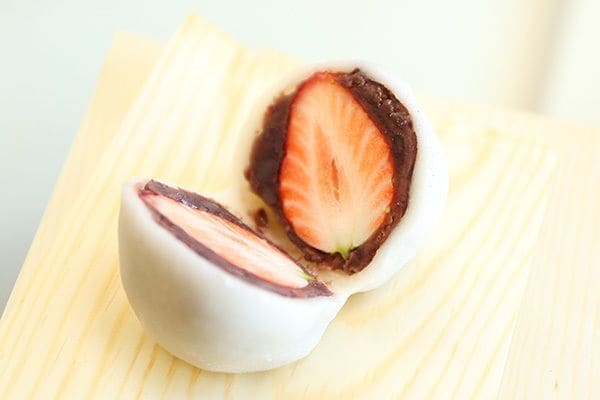
Okashi No Ise, a Japanese confectionery shop in the town of Tanaka in Ashikaga, sells sweet rice cakes filled with a whole Tochiotome strawberry from Ashikaga, wrapped in red bean paste. This is an offering that is only available in the winter. Kogure, the store’s owner, is passionate about the simple, natural flavors of ingredients and goes the extra mile to visit the market himself, to secure large Tochiotome strawberries before the bidding starts. “These sweets have a great reputation and people say that the home-made red bean paste matches really well with the sweet and sour taste of the Tochiotome strawberry. They are at their most delicious in the cold season between January and March,” says Kogure.
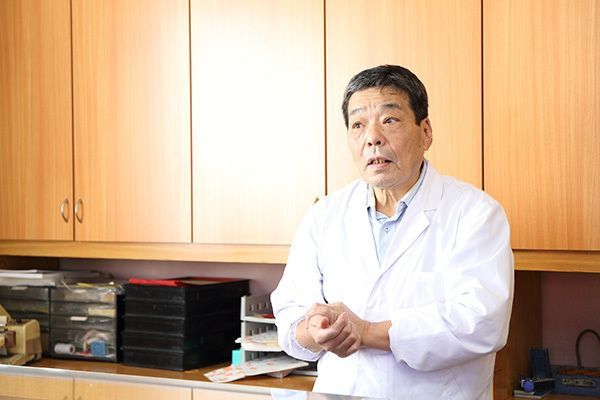
Ashikaga, the city that played a large role in Tochigi’s strawberry farming success.
The people’s unending passion to deliver delicious strawberries is still alive in this land. Why not try the strawberries that are the fruition of the passion of the people who live in the Land of Strawberries?
(Month information was collected: January 2017)
(Writer : HISAYO IWABUCHI / Photographer : SATOSHI TACHIBANA)

